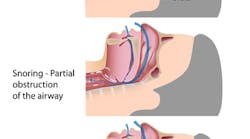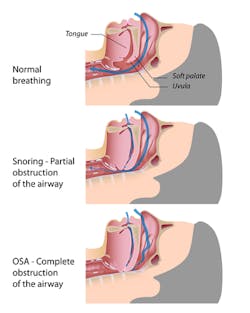In December of 2013, a report about a derailed Metro-North train with dozens of injuries and four deaths was released. At the time, there were many speculations as to what had caused the derailment, but nothing was concrete. Then on April 7, 2014, there was a breakthrough in the investigation and the engineer from Metro-North was diagnosed with severe obstructive sleep apnea. The authorities interviewed the Metro-North conductor, and he stated being foggy about the events that occurred prior to the derailment. He also complained about feeling sleepy and tired. The authorities had the conductor see a sleep specialist, who deemed it necessary to have a sleep study performed. Although the conductor is still surrounded by many speculations, I could not help to recall my first thought upon hearing this story last December, which was “he probably has sleep apnea.” The conductor’s story was similar to the stories I hear from many of the patients I see, but instead of driving a train, my patients are driving cars. I had several patients recall times where they veered off the road, fallen asleep behind the wheel while driving, or crashed into a poll. They also complained of feeling foggy and suffering from an excessive feeling of sleepiness (somnolence) and fatigue. Luckily they did not injure themselves or anyone else along the way.
RELATED: Creating awareness of sleep apnea in the dental office
According to the National Sleep Foundation, there are more than 18 million Americans who have obstructive sleep apnea (OSA). Although there is a greater prevalence of OSA in men than in women, anyone can suffer from sleep apnea. Generally speaking, we know apneas are caused by the collapse of the airway causing a cessation or decrease in airflow for at least 10 seconds. In the case of the Metro- North conductor, he was experiencing this airflow interruption more than 30 times per hour, and each interruption could have lasted anywhere from 10 seconds to several minutes. Now imagine that. How long can you hold your breath for? As hygienists we are privy to our patients’ airways, and we should look for signs of possible obstructions, such as: enlarged tonsils, an enlarged tongue, a collapsed soft palate, a large uvula, or simply the inability to see our patient’s airway when they say “ahhh.”
A profession in sleep apnea
I am the dental sleep medicine coordinator of Dental Sleep Apnea New York as well as a hygienist. I am involved in every aspect of the patients’ care under the direct supervision of a dentist who specializes in dental sleep medicine. It is a very different experience from seeing patients for their hygiene appointments, and my focus is shifted from prevention to therapy. The goal for a patient who wears a MAD is to improve the apneas and other symptoms such as fatigue, quality of sleep, and snoring. Consequently, there may also be improvements on other sleep disorders such as restless leg syndrome and insomnia.
During their visits, we discuss sleep hygiene, positional therapy, diet, and exercise. In recent years studies have shown how exercise can have a positive effect on patients who suffer from OSA; it can lessen the number of apneas and improve the patient's quality of life. Likewise, diet and weight loss will help to reduce the number of apneas and improve other metabolic co-morbidities.
RELATED: Sleep apnea considerations for the restorative patient
I’m also involved with making the impressions for the device and I am present when the MAD is first inserted. I make the patient aware of possible occurrences of wearing the MAD, which may involve pain of some of the muscles of the face, shifting of teeth, or simply just getting used to the device. It is therapy, and we are here to guide them through this therapy.
My involvement in the treatment of patients with sleep apnea has made me an active participant, and I implement what I know into my different roles as a hygienist. In general practice, I perform intraoral examinations, which involves a survey of the airway and relevant structures. I also inquire about snoring, gasping, and mouth breathing during their medical history interview. As a clinical instructor in New York City College of Technology, I educate the next generation of hygienists on the importance of looking at the airway and recognizing the signs and symptoms of someone who may be suffering from sleep apnea, while stressing the need for a sleep study for the diagnosis.
I will be presenting at the Greater New York Dental meeting and giving a brief overview focused on recognizing some of the signs and symptoms of sleep apnea. I encourage everyone to look at the airways, for it may save lives. If you’d like to know more, feel free to email me.
Ruth Marsiliani, RDH, is an adjunct lecturer at New York City College of Technology and the dental sleep medicine coordinator for Dental Sleep Apnea New York. She graduated with honors from New York City College of Technology with an Associate in Applied Science in Dental Hygiene and received The Golden Scaler Award and the Professional Excellence in Dental Hygiene Award for her performance as an outstanding clinician. She also obtained a Bachelor of Arts in English from The City College of New York. Initially, she trained as a dental assistant through the U.S. Navy and later became a dental assistant instructor in New York. Ruth is a member of the American Dental Hygienists Association, the Hispanic Dental Association of New York, and the American Sleep Apnea Association. You can reach her at [email protected].







